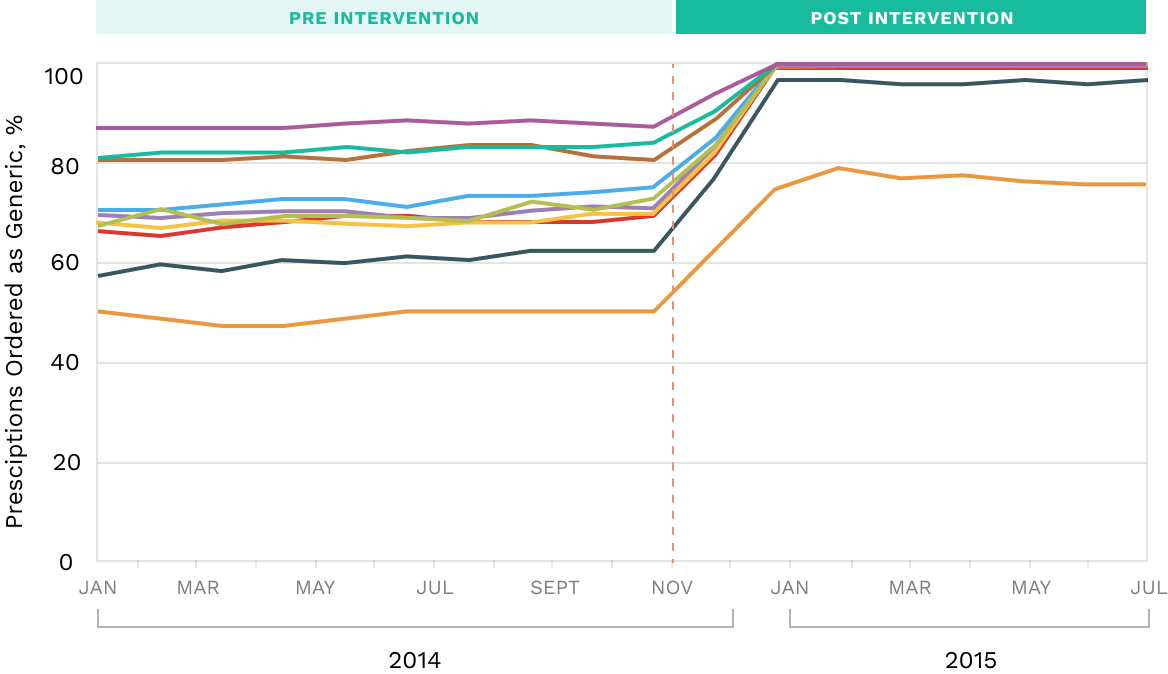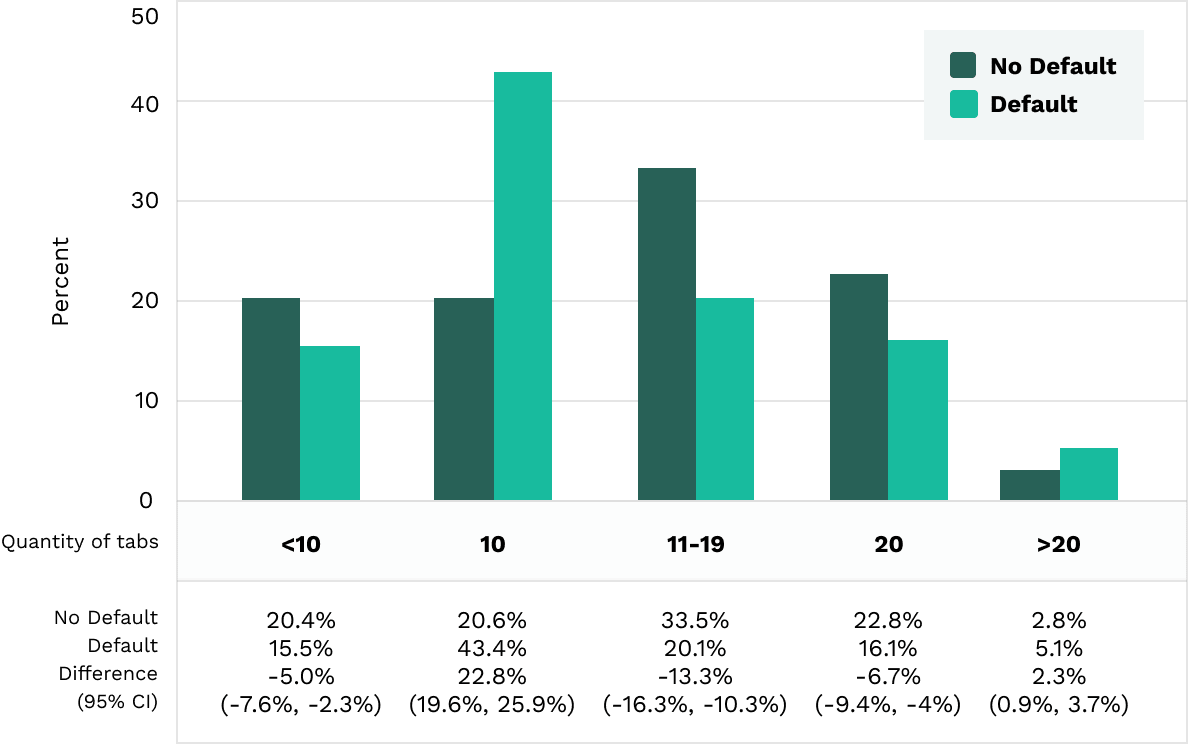
JOURNAL CLUB
Ordering defaults nudge physician prescribing behavior
Patel, Mitesh S., et al. “Generic Medication Prescription Rates After Health System–Wide Redesign of Default Options Within the Electronic Health Record .” JAMA Internal Medicine, vol. 176, no. 6, 2016, p. 847., doi:10.1001/jamainternmed.2016.1691.
Delgado, M. Kit, et al. “Association between Electronic Medical Record Implementation of Default Opioid Prescription Quantities and Prescribing Behavior in Two Emergency Departments .” Journal of General Internal Medicine, vol. 33, no. 4, 2018, pp. 409–411., doi:10.1007/s11606-017-4286-5.
Key Takeaways:
- Aligning ordering defaults with best practice guidelines is a non-intrusive and effective approach to influencing ordering behavior
- Ability to personalize order sets threatens the effectiveness of setting defaults

Introduction
Delivering high quality care relies on the alignment of best practice guidelines with a diverse clinical staff. However, variations in care arise due to a variety of factors including differences in medical training and a lack of knowledge about frequently evolving guidelines. Blank prescription pads provide the ultimate flexibility in medication prescriptions, but most electronic health record (EHR) systems provide computerized provider order entry (CPOE). These CPOE interfaces contain a variety of tools to streamline workflows, while also enabling safety checks.
The Nudge Unit at the University of Pennsylvania has studied how subtle changes to defaults in the CPOE ordering process can drive significant behavioral change and cost savings. The following reports reflect the interesting work of this group.
Approach and Results
Generic Prescribing for High Frequency Medications
The researchers used their Epic EHR CPOE to do a pre-post evaluation of an intervention. They identified 10 common medical conditions with brand name medications that had generics available: “acid reflux, anxiety and/or insomnia, bacterial infection, depression, diabetes, hyperlipidemia, hypertension and/or congestive heart failure, hypothyroid, pain, and seizure.” For these brand name orders within the EHR, the team implemented a check box for “dispense as written” that was left unchecked by default. If this remained unchecked at the time of ordering, a generic medication would ultimately be dispensed.
The study authors looked at the change of ordering practices over a seven month period after this “dispense as written” check was implemented. They found adherence to prescribing generic medications for the targeted orders increased from 75.3% to 98.4%. The only exception to this incredible change was that of generic levothyroxine which likely reflects an acknowledgement of potential differences in brand name versus generic offerings.
The team revisited this intervention after 2.5 years and found sustained prescribing practices that aligned with the health system’s goals. Over that period, it is estimated that this “nudge” has saved more than $32 million.

Opioid Prescribing in the Emergency Department
The team performed a pre-post evaluation of a new EHR implementation. In contrast to their old EHR, their new Epic EHR has the capability to set default quantities for medication prescriptions. The emergency department team opted to set a 10 pill default for oxycodone/acetaminophen prescriptions. The authors found that the proportion of these 10 pill opiate prescriptions increased from 20.6% to 43.3%. Interestingly, the researchers found a decrease in the proportion of all pill amount categories except for oxycodone/acetaminophen prescriptions over 20 pills. While it was a small 2.3% increase, they note that the new EHR had a system-wide default of 28 pills, which accounted for 50% of the prescriptions over 20 pills.

Discussion
While these results may not seem surprising on the surface, their subtle yet significant impact reflects the power of ordering defaults. Quality improvement advisors, IT analysts, and other EHR administrators often consider alerts as the appropriate tool for driving behavior change. When implemented correctly, interruptive alerts can be effective, but they also have the potential to contribute to alert fatigue and clinician burnout. For the above examples, one could easily envision scenarios in which interruptive alerts fire when a clinician orders a brand name medication or an opiate prescription over 10 pills. The subtle approach of changing defaults in an order or order set catches the clinician at an earlier stage in the decision-making process rather than after the ordering decision is complete. On the other hand, the alerting approach requires the clinician to backtrack and revisit their order, which leads to further clicks and task switching.
I’ve witnessed health systems increasingly look to order sets as a more effective approach in streamlining clinical processes without placing a significant burden on the end-user. They have the potential to save extra clicks while decreasing variation through the order bundle and use of defaults. Of course, it’s important to ensure that order sets are adopted as a part of local clinical workflows. Changing an order set that is rarely used by providers will have a limited downstream impact. As with all EHR-related interventions, it’s imperative that local workflows are fully understood and multidisciplinary teams are engaged prior to implementing any changes.
Some cite rigid defaults and protocols as a reason for physician frustration with the EHR. As a result, many health systems allow end-users to create their own personalized versions of order sets. These customizations allow clinicians to change the defaults recommended by the health system. Before allowing and encouraging this customization across the board, EHR administrators should recognize that this flexibility can lead to downstream variations in care delivery. If the decision to permit customization has been made, many EHR administrators recognize clinicians have grown too accustomed to personalization to retroactively impose restrictions. Although this might limit one potential quality improvement tactic, I have seen several organizations balance order set customization and care standardization. These organizations strike this balance by closely monitoring order set utilization to spot deviations in care across various departments, specialties, and clinicians.
Evaluating your order sets using these methods
Phrase Health allows informatics and quality teams to view order set defaults and subsequent ordering frequencies. Through analytics and management tools, teams can effectively iterate on ordering interventions to drive improvement in clinical care while decreasing the burden on clinicians and downstream costs.
You can start exploring your data quickly without any direct EHR integration or transfer of personal health information (PHI). Reach out to learn more.